Tucked into old Douglas firs that look like they have weathered many a coastal storm is the nautical-infused Captain Whidbey Inn, a historical gem situated on the mussel-stocked waters of Whidbey Island in Washington State. Chris Fisher and his son Edward built the original structure in 1907 from materials like Madrona logs and stone found on the land, dubbing it the Whid-Isle Inn. It opened shortly after as part of an island retreat named Still Park, aptly named and developed by Judge Lester Still.
Since then, it has served many different purposes, including a private residence, a boarding house, a post office, an all-girls school, a general store, and now, once again, an inn.

After several years of owning and operating the Pioneertown Motel outside of Joshua Tree, California, brothers Matt and Mike French and their business partner, Eric Cheong, were on the hunt for another project. Explains Mike, “Matt and I grew up in Portland, Oregon, and Eric has a depth of experience sailing in the Salish Sea off the coast of Washington, so Whidbey Island felt like a natural fit for all of us. The first visit to the property revealed the magic of Captain Whidbey, and we were determined to move forward.”
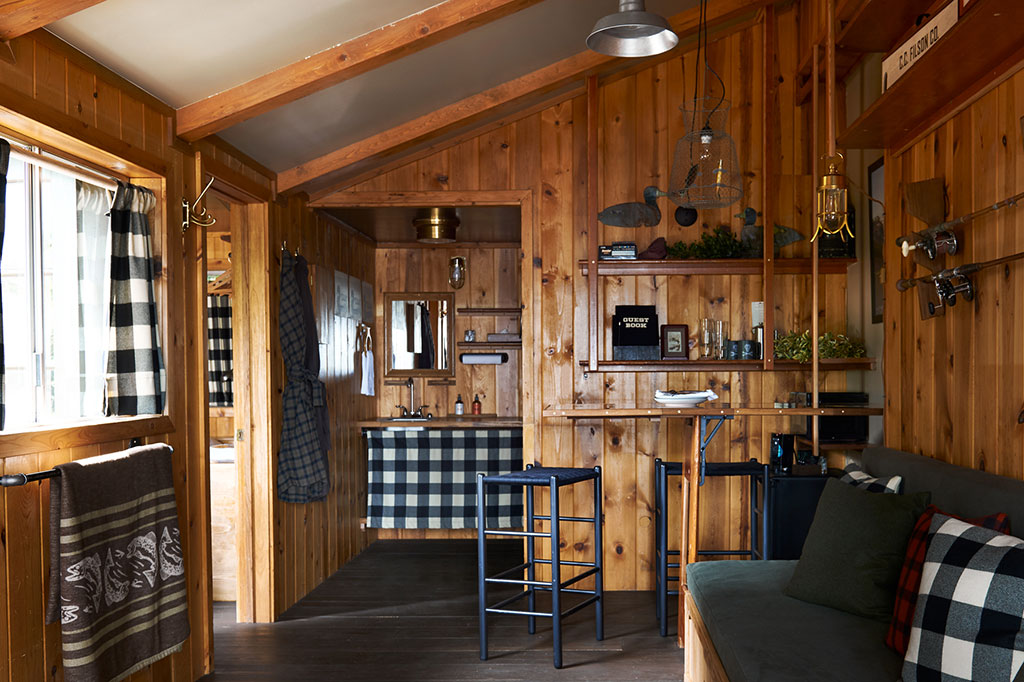
The French brothers and Cheong bought the inn in 2018 and began thinking of how to reimagine the property’s lodging with a nod to local culture, relying on Cheong, an architect, for his design expertise. They undertook a property-wide renovation, which included the Penn Cove cabins set apart from the main lodging. Each one is themed and named after a different area company. “We partnered with brands that are emblematic of the Pacific Northwest experience,” says Mike. “We aimed to work with an on-island partner as well as with heritage Seattle partners.”
In fact, it is built into their ethos to spotlight local businesses and reflect the culture in every facet of their property. Mike explains, “In all our projects, working with local vendors, artisans, and purveyors is incredibly important. By doing so, we can support the community and build real soul into the work. One of my favorite details on the property is the mural on the horseshoe bar. If you look closely, you’ll see a Morse code message in the painting, which reads a quote from a Whidbey Island poet.”
For Mike, the most rewarding part of owning Captain Whidbey is fostering the many special moments that happen on the property. “We have restored and amplified a space for genuine connection and spirited connection,” he says. “The legacy of Captain Whidbey lives on through these experiences and really hits home why we do the work.”

For the most authentic experience, guests can stay in the Historic Lodge, the heart of the inn. The lodge has retained much of its original 1907 character, including the shared bathrooms and rustic ambience. Here you can easily cozy up on a couch in front of the stone fireplace and read the night away with a good book.
Another option is the Lagoon Rooms, which surround a body of water originally built as a swimming hole for the inn. Each features custom furnishings built by John Gnorski, a California artist and builder whose work is detailed and precise and brings a fun vibe to the guest experience. The beds all sport woven blankets by Whidbey native and weaver Hannah Ruth Levi, who spent a winter weaving the custom blankets that have become statement pieces on the bedspreads.
Finally, there are four waterfront Penn Cove cabins, which are all outfitted through collaborations with beloved Pacific Northwest tastemakers Filson, Glasswing, We the Nomads, and Edit. Each includes a fireplace, a king-sized bed, and private porches.

Guests can expect locally sourced and seasonally minded menus that showcase the bounty of Whidbey Island, all while being treated to a water view. The Penn Cove Mussels are a crowd favorite, and you can even see the Penn Cove Shellfish docks where they harvest the mussels for delivery nationwide. (How’s that for fresh seafood?) Other mouthwatering eats on the menu include Salish Sea Clam Chowder and a panko-crusted Penn Cove Brewing beer-battered fish-and-chips.
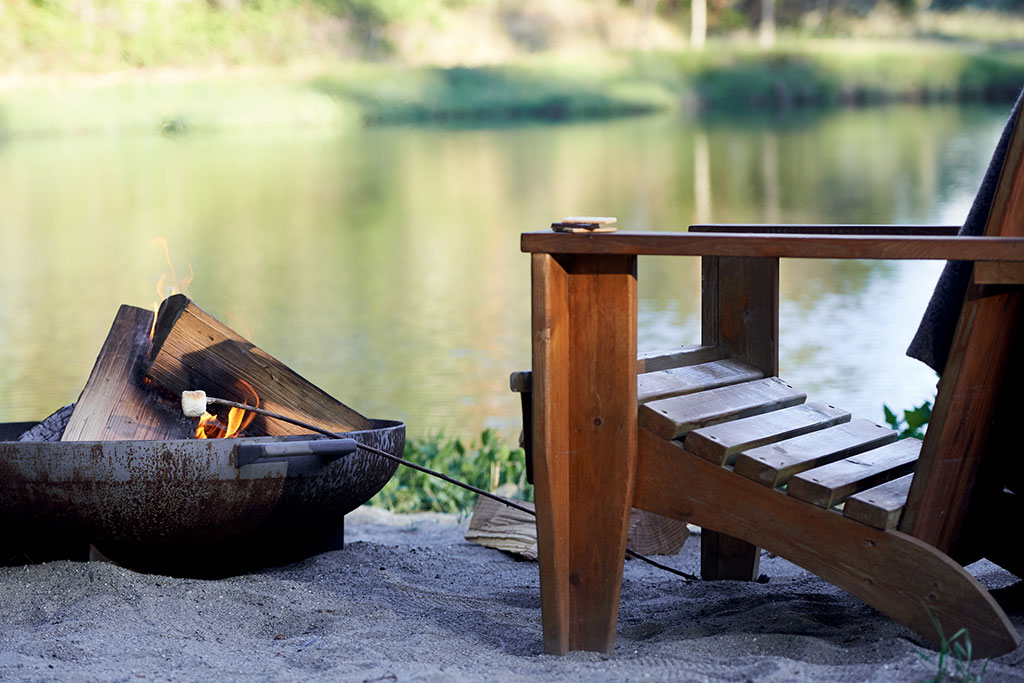
Captain Whidbey is located in Coupeville, one of Washington’s oldest towns and the seat of Island County. Guests interested in venturing off property can take a ferry to the quaint historic waterfront town to explore its many charming shops and restaurants or visit its surrounding parks, such as Ebey’s Landing National Historical Reserve, which offers over 17,000 acres of scenic landscape, accessible beaches, and stunning trails. You can also check out Deception Pass, a marine and camping park that boasts hiking, biking, and horse trails.
For those looking for a cozier stay, the inn offers a buffet of activities and happenings. There is a wellness studio and sauna for yoga and meditation and complimentary s’mores kits at the front desk to enjoy around the outdoor firepits. You can also try a whiskey flight, challenge yourself to some trivia with cash prizes, or show up to a Love Notes hour, where you can compose sweet messages to those who have passed on or to cherished friends who are right next to you. Or simply call dibs on an outdoor hammock, close your eyes, and breathe in the heady scent of pine.
Captain Whidbey resides at the intersection of design, nature, and history, drawing a diverse collection of visitors from around the world. The owners have created an environment that is at once simple and luxurious, transporting guests to a different era. Its many iterations vibrate in the wood and stone bones of the inn, a testament to the enduring spirit of Whidbey Island.
For more info, visit captainwhidbey.com
While cooking is an essential part of life, it’s also an art form that requires a mix of skills and creativity. Of course, you may feel that neither comes naturally to you, but that doesn’t mean you’re forever hopeless in the kitchen. With a little time and practice, and with a few key tactics, you, too, can channel your inner professional chef and start dazzling with your meals.
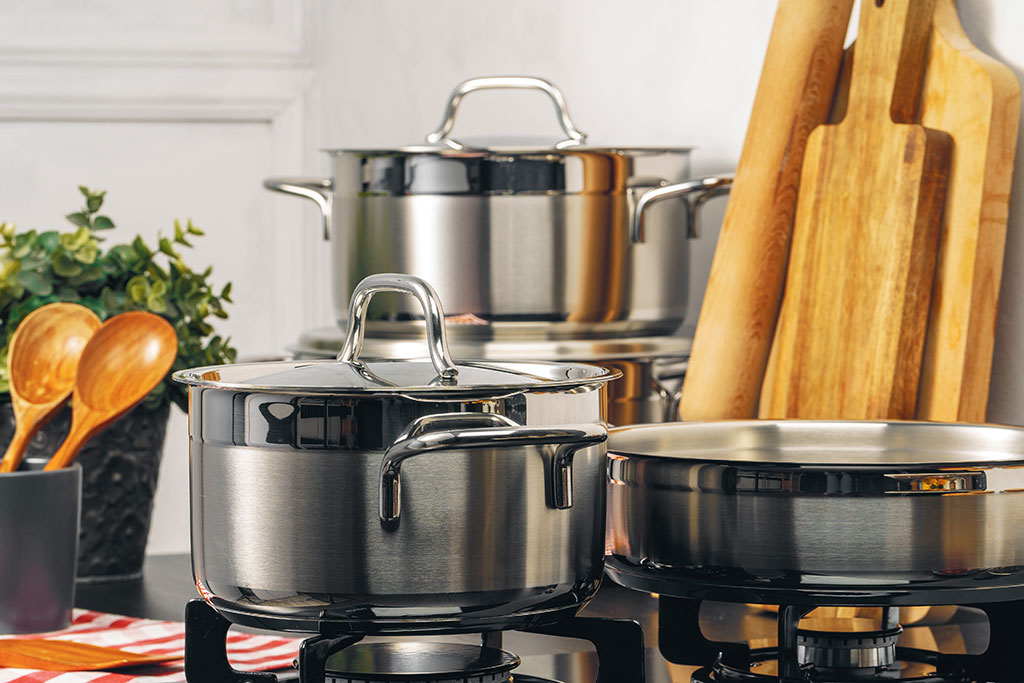
Being a good cook requires first familiarizing yourself with the essential tools—especially frying pans. These are a must-have for every kitchen since you need them to sauté, fry, sear, and braise your foods. And because they’re so important, you’ll want to make sure you’re investing in quality ones. Don’t just buy the cheapest set out of convenience. Instead, conduct some research first, looking at the longevity of the pans and how evenly they cook foods. You’ll be able to use them for years to come as long as you take the time to find the right ones.
On top of that, it’s important to understand the differences between the three main types of frying pans—nonstick, stainless steel, and cast iron—because you can’t cook just any food in any pan. For instance, cooking anything acidic in cast iron can result in a metallic taste and damage the seasonings that have developed in the pan over time. Be sure to research which pan is best for which foods and how to properly maintain each one. All serve a specific purpose in the kitchen: stainless steel is ideal for more delicate foods like vegetables and fish, cast iron works well for anything needing an extremely high heat, and nonstick is best for low-heat foods like pancakes and omelets.

There’s no getting around it—cooking requires using a knife, whether to chop vegetables, slice meat, or cut fruit. So if you’ve ever felt uncomfortable wielding one, then perhaps it’s time to improve your skills. It all starts with how you hold the knife. First, place the thumb and index finger of your dominant hand on each side of the bolster (the connector between the blade and the handle). This will protect your fingers while also increasing comfort and stability. Then wrap the rest of your fingers around the handle. Hold the food item with your other hand, being sure to curl your fingertips inward to allow your knuckles to guide the knife along the item. Using a rocking motion, move the knife up and down and front to back to make your cuts.
Once you’re more comfortable holding the knife, you can practice various chopping, dicing, and slicing methods. Each one can be used for different foods and purposes. Chopping is good for foods you want to cut into small pieces that are roughly the same size, such as garlic and herbs. Dicing creates uniform squares to help foods like onions and potatoes cook evenly. And slicing is best for when you want larger pieces of equal thickness, as with an apple or a tomato. Just remember that all this work can take a toll on your knives, so it’s important to sharpen them yourself every two weeks and get them professionally sharpened at least once a year.

Seasoning is everything when it comes to cooking—it can even make or break a dish. After all, no one wants to eat undersalted foods that taste a bit bland or oversalted foods that are overly intense. Learning how to use seasonings, which include spices, herbs, salt, sugar, oil, and vinegar, is essential for developing well-rounded flavors that complement the recipe and specific ingredients you’re using. You should ideally season at every stage of the cooking process, tasting each element as you go. This way, you can adjust your flavors where needed, looking for spots that need more salt, pepper, lemon juice, or anything else your recipe might call for.
As you familiarize yourself with seasoning, you can also work on recognizing the five overall flavors: sweet, sour, salty, bitter, and umami. You likely know what the first four taste like, but umami is a little harder to recognize. It’s that certain richness found in savory dishes with ingredients like soy sauce, kimchi, anchovies, sun-dried tomatoes, or different cheeses. These five elements ultimately work together to create well-balanced dishes that have a greater depth of flavor. If you taste a dish and it feels like it’s missing something, it might just mean you need to increase at least one of these elements. In that case, simply add in more of a specific seasoning or ingredient until you arrive at the perfect flavor.
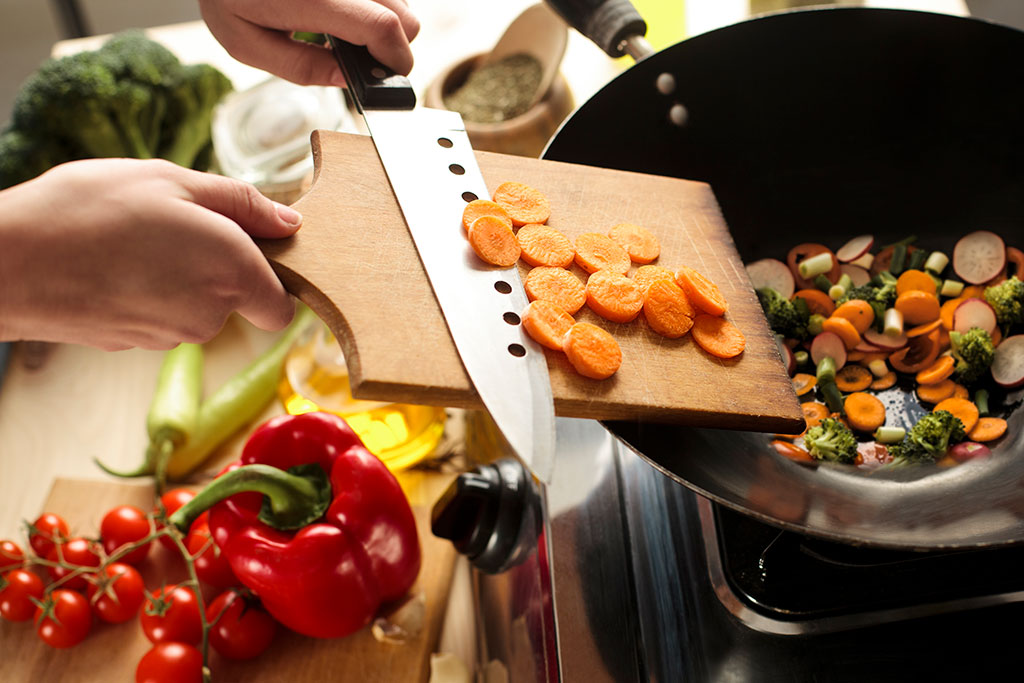
A lot of cooking comes down to prep work and timing. Mise en place, a French culinary term, refers to having everything in one place before you even begin cooking. This means cutting your vegetables, measuring out your spices and other ingredients, and marinating your meats all at once rather than as you go. This can take a lot of stress out of the process since you won’t accidentally burn your broccoli while you’re distracted chopping your garlic. Have every ingredient you need ready to go on your counter, and then go ahead and get cooking!
Cooking is a skill that you can develop over time with a lot of patience and practice. And as you grow in the art form, you can experiment with more challenging recipes that are sure to impress your friends and family.
Does the peak of summer tempt your wanderlust? If so, heed the call to blaze your trail across the nearly four million miles of American asphalt. Whether you go it alone, grab a friend, or pack up the whole family, it’s about time you burned rubber toward the pristine beaches, mountain trails, far-off loved ones, and landmarks that have lingered on your must-visit list for way too long. But before you hit the road, invest a little time in preparing for your long-distance travel. Even an unscripted road trip has a few basic essentials beyond a car and a thirst for adventure.
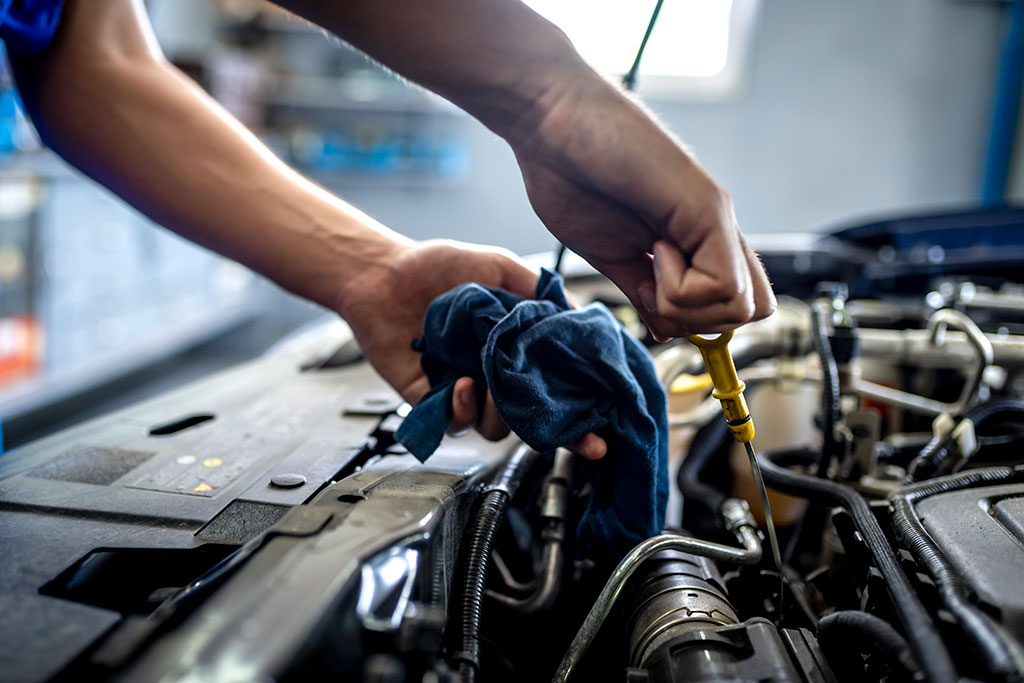
Every road trip movie has an inevitable burnout scene: the engine sputters, and the driver pulls onto the shoulder, then raises the hood to release a cloud of smoke. If you’d rather not be in those shoes, schedule a few maintenance tasks for your vehicle ahead of your trip. Popular Mechanics recommends checking the six essential fluids—engine oil, power steering fluid, brake fluid, engine coolant, transmission fluid, and windshield wiper fluid—before any long drive. You should also check your tires’ air pressure before departing and after every 1,000 miles traveled.
For extra assuredness, hand your vehicle over to a mechanic for a comprehensive safety inspection. And if you notice anything concerning while driving, like unusual noises or odors, find the nearest auto shop; a pit stop may throw off your schedule—or free-spirit vibe—but so would a roadside breakdown. Just in case, stock your car with practical essentials, such as jumper cables and a flashlight. For a list of what to include in your emergency car kit, download the guide below.
Finally, remember to fuel or charge up before long drives, and always carry your driver’s license and an up-to-date copy of your auto insurance.

Even if you’re a road warrior in your own right, take care to prepare your mind and body for the rigors of long-distance travel. Get seven to nine hours of sleep every night before you get behind the wheel, and eat a nutritious meal before you depart—but avoid overeating, which may just make you sluggish.
Packing light can keep your vehicle unburdened, but don’t skimp on road trip necessities, the most basic of which is currency. Any beatnik inclinations aside, you need a combination of cash and cards for everything from fuel and accommodations to souvenirs if you want to have a satisfying road trip. Additionally, even if you’re eager to go off-grid, you should still bring a cell phone for emergencies and navigation assistance. And always pack an extra charger for when you inevitably leave the other in a hotel room outlet.
You’ll also want to prepare for other contingencies as you travel. Pack enough clothing and toiletries for at least one extra full day away in case delays, changed plans, or a wayward ice-cream cone depletes your supplies. Include extra items for your little ones too—they always seem to be messier when you’re far from home. If you have a furry companion, protect your upholstery from damage with this Frisco Seat Cover, and make sure to let them out every time you make a pit stop.
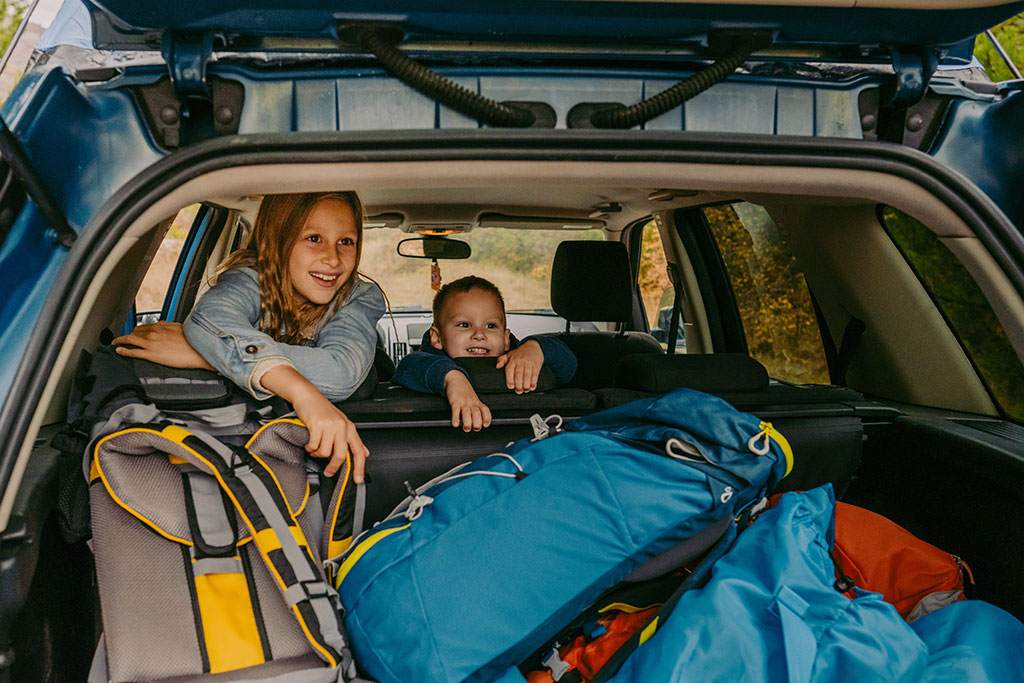
If you plan to spend your nights camping, be sure to research legal campgrounds along your route rather than pitching a tent unpermitted. Look up each campground’s rules—its website or entrance booth will likely post information about fire regulations, trash disposal, and more. Pack a tent, cooler, safety equipment, hygiene goods like biodegradable soap, and cooking tools. So that you leave only footprints behind, take a traveler’s dining set like this Coleman pack in lieu of plastics.
Other adventure tools are the traveler’s choice, such as a high-resolution camera for documenting your travels, a notepad for collecting your open-road thoughts, and sports equipment like bikes or kayaks for when a local park allows them—and the scenery triggers your adrenaline.
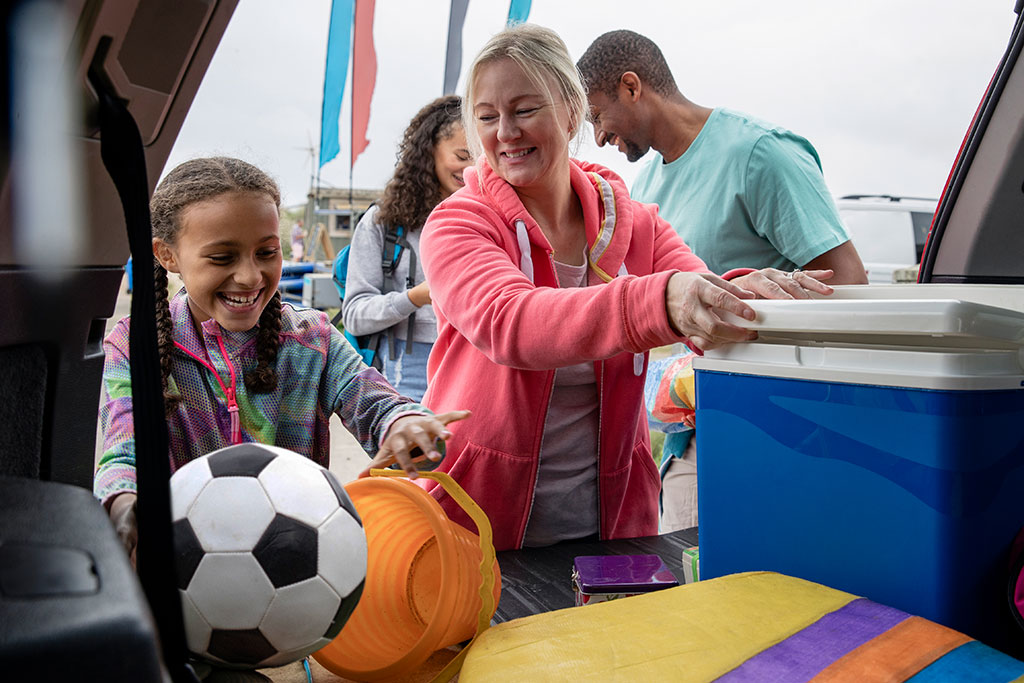
Water and satisfying snacks are must-haves. If you anticipate traveling long hours outside of civilization, bring a cooler packed with balanced foods like bread, peanut butter, honey, and apples as fare for roadside picnics. (The wicker basket and buffalo check blanket are optional.) This Igloo cooler is roomy and well insulated but affordable, and it’s also a handy mobile bench.
If you have a specific destination in mind, pull up your favorite navigation app and review all recommended routes, taking note of road closures, tolls, and high-congestion roadways before choosing an approach. If you’re setting out with only the depths of your soul or a mental breakthrough as your destination, review the current conditions along your path out of town and scan the surrounding highways during each break for travel interruptions so you know which paths to avoid.
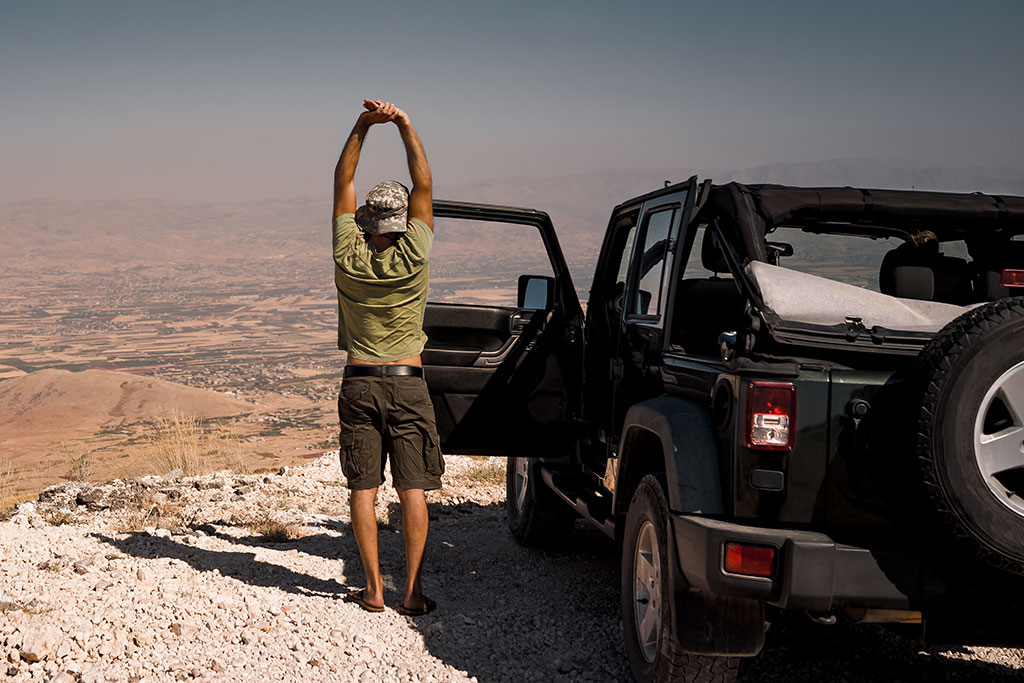
To prevent driving sores, sit up straight in the captain’s seat, and pull over at a rest stop or safe parking area approximately every two hours to get out of the car and stretch your legs. This will also help you avoid “highway hypnosis,” which is when your attention blurs and endless roadways start to feel too redundant to hold your focus, and give you a chance to have a snack, get caffeinated if you partake, and switch drivers if possible. As a bonus, you can use these stops as opportunities to take in the local flavor, especially in unfamiliar areas.
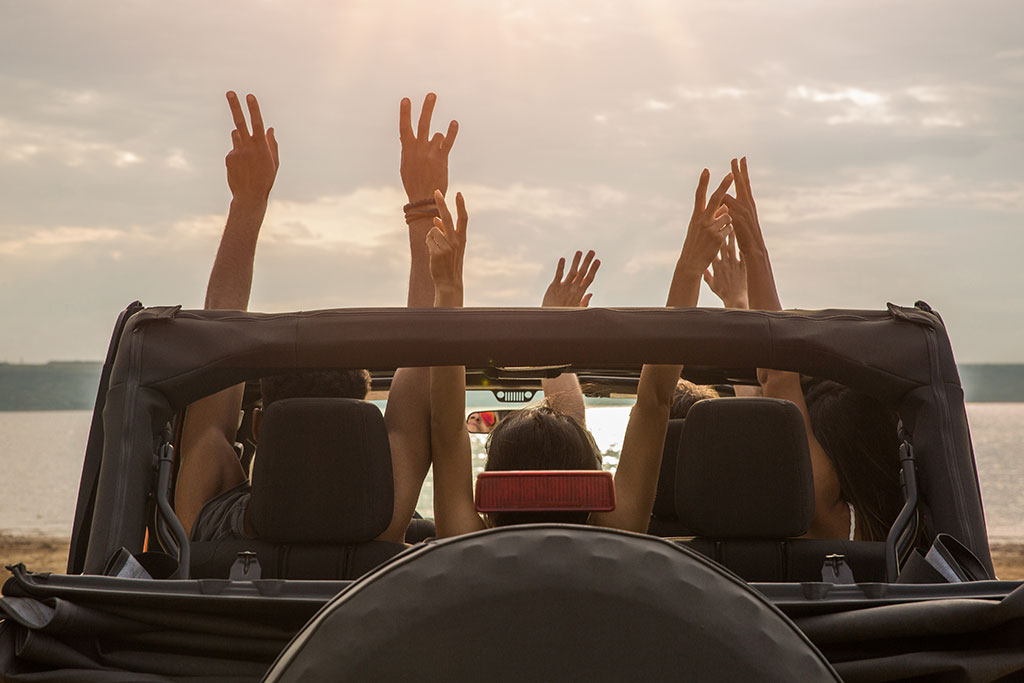
If you’re more invested in the destination than the journey, a long road trip may feel like a slog to you, so prepare a bevy of entertainment to help the clock and odometer spin a little faster. Queue up your favorite music, audiobooks, and podcasts—it’s a good thing you have that extra phone charger—and bring activities for impatient passengers. Toys and portable video game consoles are particularly effective at silencing back seat complaints. For collaborative fun, turn to tried-and-true road trip games like Twenty Questions and Would You Rather? If those don’t suffice, check out The Road Trip Expert for dozens of other game ideas you can try.
No matter where you’re coming from or where you’re headed toward, there’s always something unexpected and fresh to experience on the way: a state park, historic landmark, or diner favored by truck drivers and other roadsters. If you’re unsure what awaits you on your unique route, Road Trip USA offers must-see recommendations ranging from conventional tourist stops to our nation’s best-kept secrets—and everything in between.
Download the Ultimate Car Emergency Kit PDF
The night sky is filled with endless wonder, including meteors—which we can observe as they enter the earth’s atmosphere—and collections of them, known as meteor showers. Robert Lunsford, fireball report manager and contributing editor for the American Meteor Society, discusses the marvel of meteor showers and offers essential viewing tips.
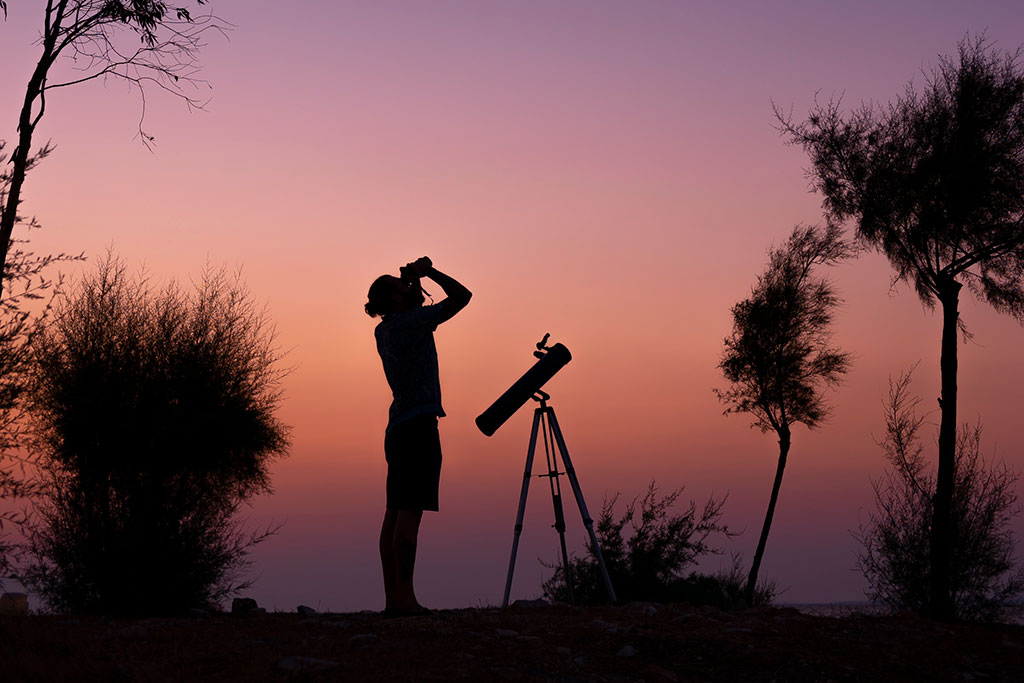
Meteor showers are surprisingly predictable. Why is that the case?
Meteors are produced by comets or asteroids whose orbits are well-known—the earth intersects them at pretty much the same time every year. It may change by a few hours or a day or two each year, but we have a good idea of when they’re going to happen, so we can advise people on when they can see the best activity.
You’re a fireball report manager. What exactly are fireballs?
A fireball is basically a meteor that’s larger and brighter than normal; it equals or surpasses the brightness of Venus. They’re quite rare and unpredictable since most are not related to any known shower. Earlier this year, though, for only the seventh time ever, scientists were able to predict when one would occur.
Scientists are so interested in fireballs because a meteor must be at least that bright to survive the atmosphere and produce meteorites. But whether meteorites fall to earth depends on their angle of descent and velocity when they enter the atmosphere. If either is too great, they’re going to be vaporized. And even when they do touch down, the original meter-sized object is usually reduced to just a couple of few-ounce fragments at best.

Does that mean meteors can’t destroy cities like in the movies?
[Laughs] To be honest, they’re not hot, like the movies show—they don’t start fires or destroy buildings. You won’t even find things such as hot coals on the ground. From about five miles up, our cold atmosphere cools them.
Is there a holy grail of meteor showers?
One was last year’s Tau Herculid, the result of a comet that basically fell apart back in 1995. But the true holy grail is the Leonid meteor shower, which produced two of the best displays ever recorded in November 1833 and November 1966. The latter was completely unexpected. Experts thought that the Leonid had petered out because it hadn’t produced any displays since 1866, so it was a huge surprise to see it come alive again a century later.
The Leonid was also pretty spectacular in 2001, producing up to seven meteors per second. To put that into perspective, the best showers normally produce one or two meteors per minute. Naturally, they don’t come once every sixty seconds like clockwork—you can go five minutes without seeing anything, and then you’ll have two or three within a minute. But the best showers can reach two hundred an hour in the darkest places.
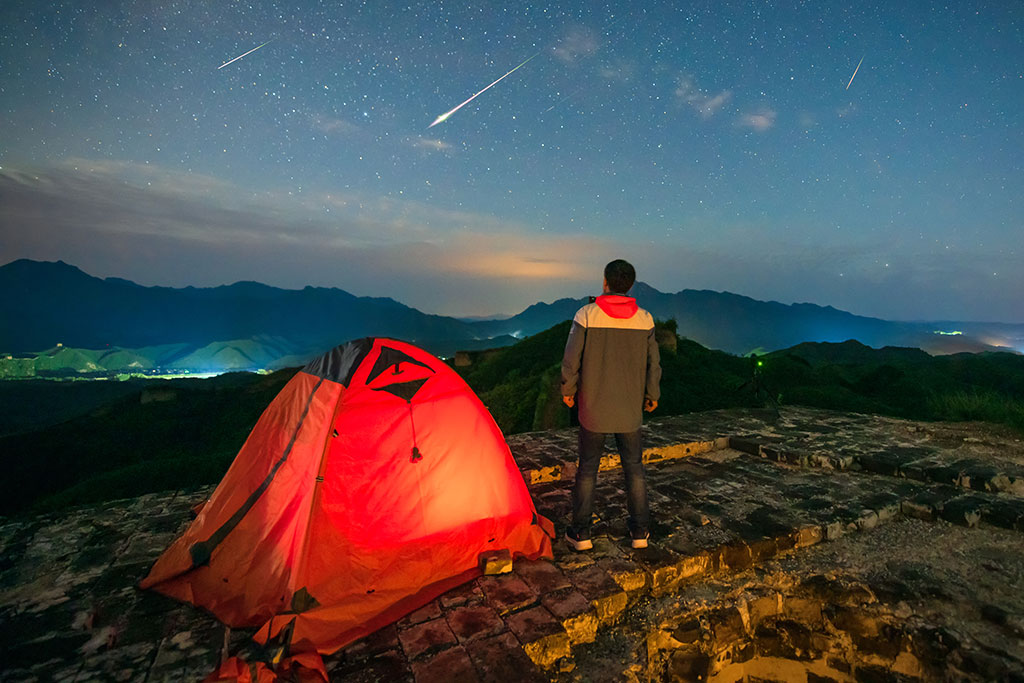
What’s the best way to view meteor showers?
You want to be in a wide field so you can see as much sky as possible, and the darker your sky, the more meteors you’ll be able to see. Binoculars have a much wider field of view than telescopes and are quite useful for seeing meteors that produce trains, which are lines of smoke that twist and twirl in the upper atmospheric winds after the meteors disappear.
Pay attention to the schedule too. During summertime in the Northern Hemisphere, things pick up and it gets a lot more entertaining, even during the evening hours. For example, if you want to watch the Perseids, which occurs from mid-July through August, start as soon as it gets dark. You’ll see five or six meteors per hour, and that will only increase as the night progresses—up to about sixty per hour toward dawn.
One thing that’s helpful to us is when people log meteors and their parameters, such as the time and conditions. That tells us exactly when the earth passes through the densest part of these meteor showers, which enables us to make more accurate predictions for the following year.

Ultimately, what do you get out of these experiences?
When I’m out watching these events, I’ll often think, There’s really no such thing as a random meteor. At one time, it belonged to something that fell apart, but it has become so dispersed through the years, it’s no longer recognizable. I often wonder what body it came from. Could it have been an asteroid, a comet, or even another planet? Those are the kinds of deep thoughts you can have between seeing meteors.
It’s really up to you how immersed you want to get in this activity. You can try to find out everything possible about what’s up there, or you can just lie back and enjoy the show. Either way, you never know when that fireball might zip overhead and illuminate the entire sky or produce a train. It’s mostly a big surprise, and it’s well worth the wait.
For more info, including the 2023 meteor shower calendar, visit amsmeteors.org







